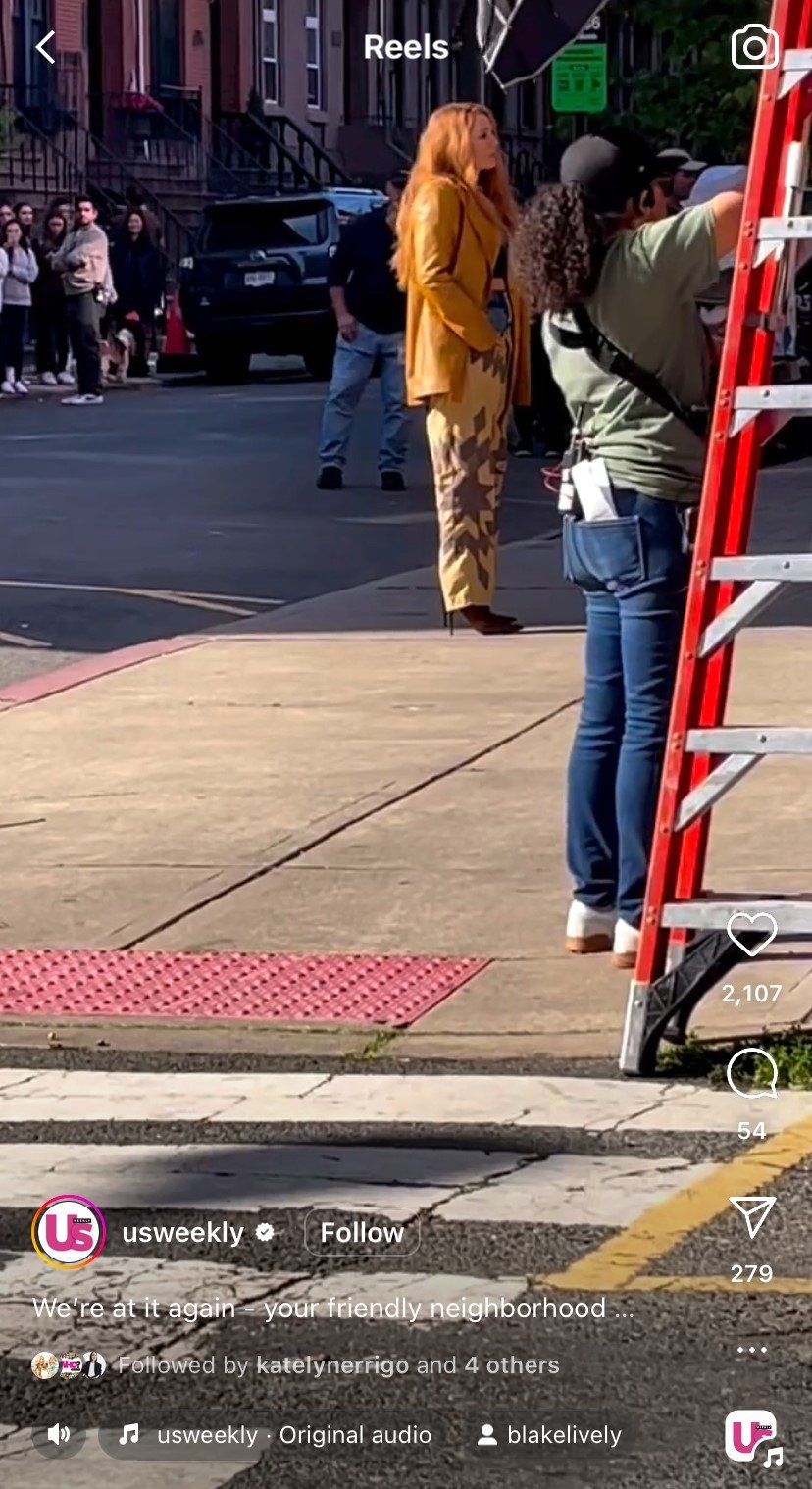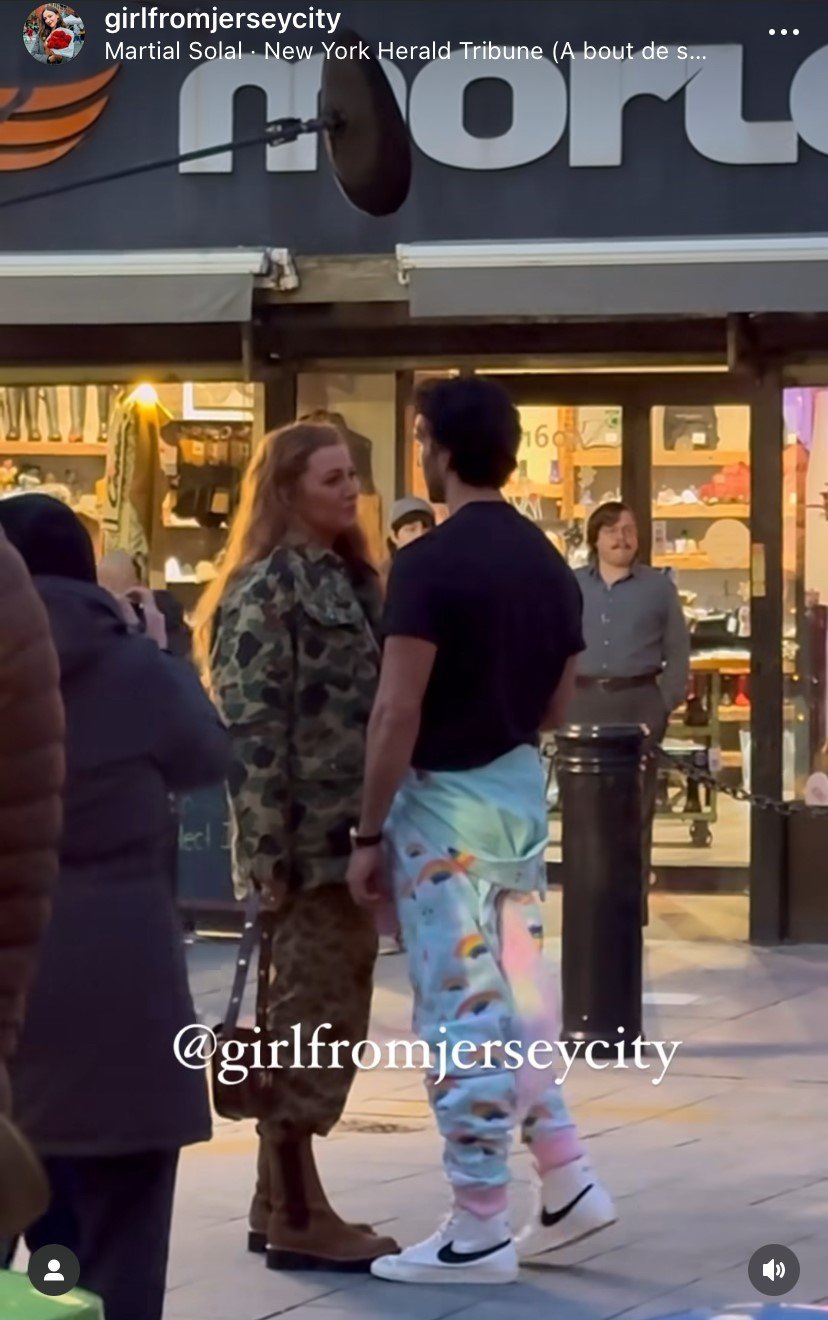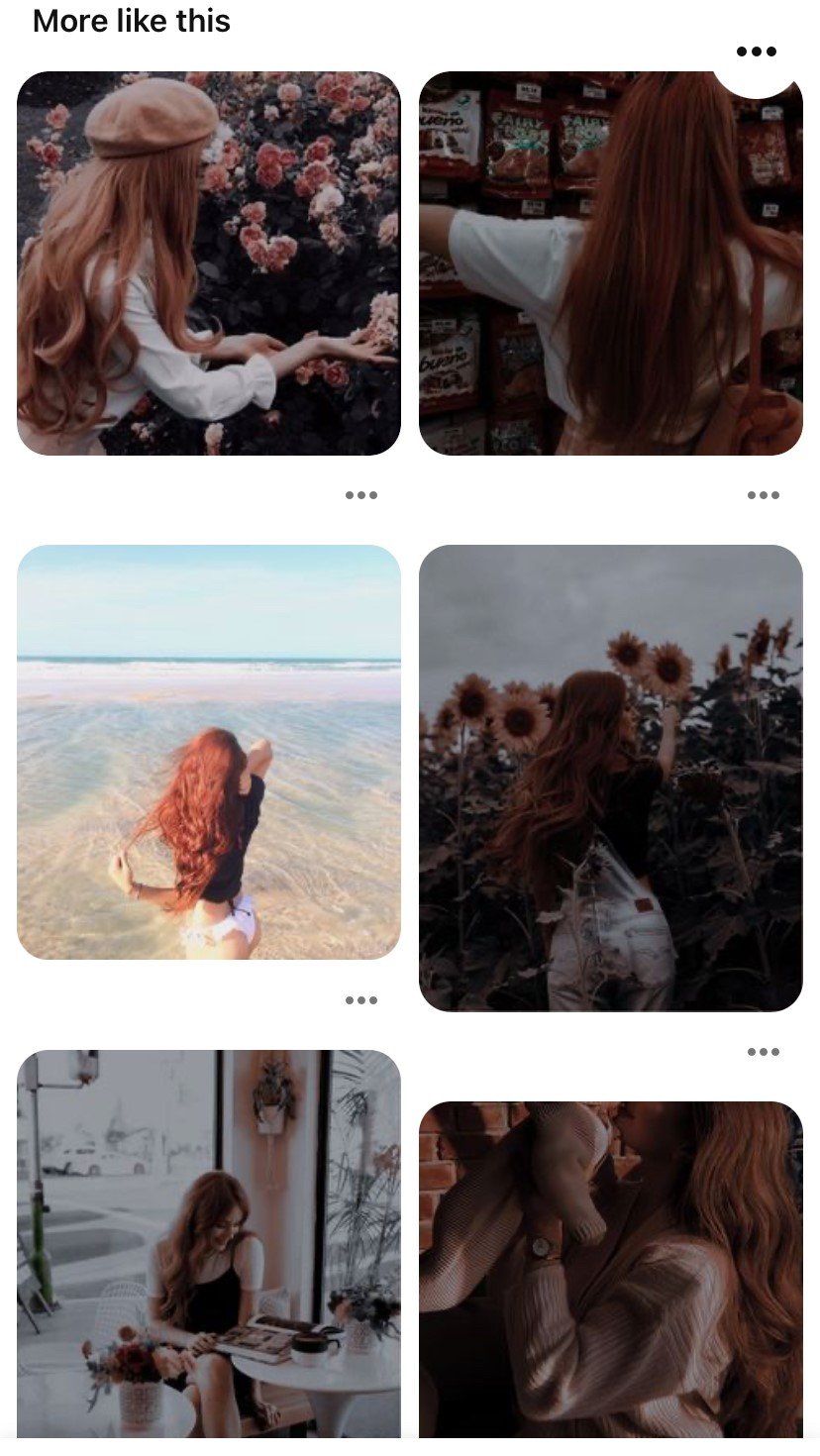The Lily Bloom Aesthetic
Following the Costumes of It Ends with Us
[This post contains discussion of domestic violence.]
Sometime last June, I began seeing a certain kind of Instagram Reel. Who knows exactly why: maybe because I follow Blake Lively, maybe because I interact with a lot of costume design accounts. A recommended Instagram Reel tends to be like stale kettle corn: it doesn’t taste very good, it has very little nutritional value, and yet you can’t stop consuming it.
These Reels popped up again and again: videos or photo slideshows of Lively, filming the adaptation of BookTok-beloved It Ends with Us. Her costumes were eclectic, for sure, but the comments in response were one-note: “frumpy,” “terrible,” “ridiculous”—“is this a joke?” I became fascinated by the language book fans were using: “homeless” seemed to come up a lot, a strangely insensitive choice for a movie in which the romantic lead, Atlas Corrigan, was once unhoused.
I certainly wasn’t the only person who noticed the fan reactions. The book’s author, Colleen Hoover, went on Today in part to address the film’s criticisms: among them, that both Lively and Justin Baldoni were too old to play their characters. (Hoover took the fall for this, saying she had accidentally written the characters—including a thirty-year-old neurosurgeon—too young.)
Not long after I began seeing these Reels, the film’s set shut down—no, not thanks to fearless internet commenters, but the WGA strike (and subsequently, the SAG-AFTRA strike). At the time, I hadn’t jumped back into this newsletter, but I swore when both filming and my writing resumed, I would look deeper into Lively’s costumes: How does her character, Lily Bloom, dress in the book? How does she dress in the film? And why can’t fans reconcile the two?
Lively was back on set in January, so off I went.
I started by reading the book. Here’s a quick summary for those of you who have somehow avoided one of the millions of copies in print: Aspiring florist Lily is initially romanced by wealthy doctor Ryle Kincaid, but he soon becomes physically and sexually abusive—much as Lily’s father was to her mother throughout her childhood. After becoming pregnant—and with the help of her first love, Atlas—Lily leaves Ryle, not wanting her child to go through what she did.
The book, for its part, has very few descriptions of the characters’ wardrobes—a fact Hoover freely admitted in her Today interview (“I don’t care what [the characters] have on. In my head, it’s about the conversation they’re having and the story”). In my read, I counted the references to Lily’s clothing on two hands: ranging from nondescript “jeans” to “a baggy sweater and a jacket” hiding her pregnancy. The most concrete thing she wears is the ubiquitous “little black dress.”
Ryle’s clothing actually receives more detail than Lily’s. When they first meet, he’s wearing a “casual Burberry shirt”; at the same party where Lily wears her black dress, he dons “a black suit that makes [his] scrubs look like child’s play.” His sister, Allysa, is equally fashionable; she offers Lily her “designer” maternity clothes. For both Kincaid siblings, their clothing is an easy signifier of their wealth—and both how attractive and foreign it is to Lily.
The most telling references to Lily’s style come not from her clothes but from her floral design. She envisions opening a shop that “showcase[s] the villainous side” of flowers: “Instead of pink accents, we use darker colors, like a deep purple or even black. And instead of just spring and life, we also celebrate winter and death.” In a later scene, she carries out this vision with a steampunk-inspired bouquet, the vase made from “a pair of old button-up women’s boots” that she found at a flea market. Her end result is not “sweet” but “weird,” offbeat, and not a little bit DIY and thrifty.
In other words, like her costumes.
At first glance, the film’s outfits do look, well, wacky—a combination of pieces that don’t seem to go together. But on closer look, patterns emerge: Lily seems to favor high-waisted pants with a cropped shirt, an oversize jacket or blazer, and a pair of chunky shoes. Her color palette is fairly consistent: lots of blues, yellows, reds, and browns, usually rendered in at least one funky print or patchwork style. The exception is this outfit, which layers a pink Carhartt T-shirt and chore coat over a brown dress—perhaps signaling a significant moment for a character who rejects pink in her floral design.
The aforementioned chore coats and Carhartt seem to be a nod to her job as a florist (here, she wears a pair of Carhartt overalls to work). The more oversize silhouettes feel like a lead-up to the baggy clothes Lily wears in the early days of her pregnancy. (I’m inclined to think this scene comes when Lily is trying to leave Ryle—hence the messy hair and big plaid coat.) And the eclectic patchwork and prints would not intimidate a woman who loves a little DIY; this pair of red lace-up boots reminds me of her flea-market vase.
Altogether, the costuming seems to be considering the Lily described in the book, albeit through the heightened, slightly absurd lens of film. Am I saying that these outfits are suitable or appealing for anyone? Definitely not. But they are believable within the constructs of the character. (The most unbelievable choice, honestly, is the double waistbands featured in a couple of her looks. I just don’t think Lily Bloom should be the face for sagging, now or ever.)
In fact, the costumes remind me a lot of the ones Eric Daman did for Gossip Girl: he took small references in the original text and expanded them into a hyper-specific, over-the-top aesthetic, with plenty of collaboration from Lively. Interestingly enough, that seems to be what he’s doing here, too. Though he’s mentioned in none of the articles or photo roundups on It Ends with Us’s costumes, he’s listed as the film’s costume designer on IMDb.
Perhaps no surprise for someone who spent six months dissecting Daman’s work, but his choices speak to me more than the fan-made interpretations. I searched “Lily Bloom aesthetic” across Tumblr, Pinterest, and TikTok, and came up with almost all the same visuals. This Lily wears simple, feminine dresses, blouses, and jeans. She has a penchant for cafés, museums, and flower markets—and taking photos within them. There are sweet, pink flowers abound.
Simply put, this Lily embodies a fairly common social-media aesthetic—one of a very young, very thin, very white woman living a romantic yet bland life in an urban setting, seemingly with no pesky job to interrupt her afternoon lattes. Only the vibrant red hair, tiny heart tattoo, and slightly moody filter distinguish her from any similar type.
Now, I’m not saying this is how every book fan pictures Lily, only that it seems to be the most prevailing image of her. This is, I think, is the root of dissonance between the film’s costuming and the fans’ reactions: the former doesn’t bother prettifying Lily, doesn’t make her “cute quirky” (Glamour) instead of just quirky. Lily spends most of the book being abused by her partner or watching her mother being abused by hers. Does she have to be cute? Does she have to be pleasing? Does she have to be . . . sweet? Maybe her clothes are a reflection of her life—how chaotic and messy it feels.
It Ends with Us, and Colleen Hoover in general, have been criticized for their portrayal of domestic violence—some readers say the abuse is romanticized, while others disagree. (Personally, I find the ending, in which Lily allows Ryle to be a part of their child’s life, to be both baffling and terrifying.) Perhaps, then, the film is trying to address the story’s criticisms—and not make the equivalent of another cutesy coloring book.
Of course, this is all speculation until the movie actually comes out. Hoover herself has said that “a couple of outfits [that have been photographed] . . . are completely out of context” (Today). It’s easy to make quick judgments over on-set photos, especially when they’re served to us almost instantaneously. After all, we live in an age in which movies and TV series must guard their storylines through costume choices: I think of And Just Like That . . . putting Mr. Big on the set of his own funeral scene, Sex and the City 2 sending Samantha out in a wedding gown. Who knows what choices the It Ends with Us costumes obscure, or when we’ll see them in context. I can promise one thing—I’ll be back when we do.
[I’ll return with my next post on Thursday, 4/11. Until then, perhaps you would be interested in Yes, We’re Still Watching’s delightful boyfriend roundup, to which I contributed an only slightly unhinged response.]



